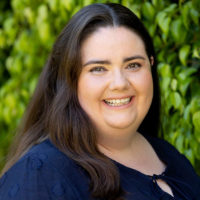Articles / New evidence-based guideline for PCOS explained


writer
General Practitioner; Co-Director, Sydney Perinatal Doctors
PCOS affects one in eight Australian women, yet it’s underdiagnosed and undermanaged, says Professor Helena Teede of Monash University and the International PCOS Network, who is also lead author of a new evidence-based guideline.
The release of the 2023 International Evidence-based Guideline for the assessment and management of polycystic ovary syndrome marks an exciting transition away from controversial historical consensus criteria. Professor Teede describes the new diagnostic guidelines as extending and refining the Rotterdam criteria.
“This is a reproductive, metabolic, psychological and dermatological condition. It is not a condition of the ovaries. It does not involve cysts. It is very poorly named,” Professor Teede says, adding that an international workshop is in the process of renaming the condition.
At least 70% of women with PCOS will be captured by the presence of both of two criteria: oligo- or anovulation AND clinical or biochemical hyperandrogenism. This means GPs will often be able to diagnose PCOS without any tests at all.
For those who fit one of these criteria only, diagnosis may then be made with polycystic ovarian morphology on ultrasound or by anti-mullerian hormone (AMH). Professor Teede is very clear that we should not be ordering both tests. “It’s either/or, not both, because you will over diagnose if you do both,” she says.
When using ultrasound or AMH in diagnosis, it is also important to exclude other aetiologies. Professor Teede recommends TSH and prolactin screening in these patients, and a clinical review for rarer conditions such as Cushing’s.
Neither ultrasound nor AMH is a standalone test for diagnosis.
International Guideline Criteria for PCOS diagnosis in adults
requires two of the following:
- Oligo- or anovulation;
- Clinical and/or biochemical hyperandrogenism;
- Polycystic ovaries OR AMH levels, AND exclusion of other aetiologies
Choice of AMH or ultrasound will depend on a variety of patient and access factors. AMH is not currently Medicare-reimbursed in Australia for the diagnosis of PCOS, but Professor Teede says “we are working on that.” She says AMH testing costs less than the gap on a transvaginal ultrasound, and is less invasive and more acceptable for many patients.
Diagnosing PCOS in adolescence has historically been controversial, both with many paediatricians reluctant to do so, and with many young women told they have PCOS based on ultrasound morphology alone.
“Many of the features of PCOS are actually aligned to normal pubertal transition,” says Professor Teede. “Oligo/anovulation is common. Excess hirsutism is often common. And polycystic ovarian morphology is very common and non-specific.”
The new diagnostic criteria for adolescents requires both oligo- or anovulation, and clinical or biochemical hyperandrogenism. If they meet only one criterion, Professor Teede says we should not be testing for ovarian morphology, and definitely not be checking AMH. With a single criterion they may be labeled as at risk, and should be re-evaluated in their 20s, she says.
International Guideline Criteria for PCOS diagnosis in adolescents
requires BOTH of:
- Oligo- or anovulation; and
- Clinical and/or biochemical hyperandrogenism;
AND exclusion of other aetiologies
PCOS is a lifelong condition with effects on fertility, as well as metabolic and psychological health. “Care may need to be interdisciplinary, but coordination needs to be primary care and patient-centred, with a strong focus on patient empowerment, education, and what’s important to them.”
Management involves education, lifestyle modifications, and sometimes pharmaceutical options depending on patient symptoms and preferences. The guideline offers a useful GP summary alongside the larger document.
“There is no hormone-balancing diet. There is no miracle cure. The plethora of inaccurate misinformation on the internet in this area is overwhelming,” Professor Teede says. She recommends the AskPCOS app, which is free and available in 12 languages.
“Early and timely diagnosis is critical,” Professor Teede says. “Everywhere we surveyed, women reported getting a delayed diagnosis and seeing two or three doctors before they were diagnosed.”
“For many women, diagnosis is therapy. Knowing what’s wrong with you, and knowing that you can be empowered to change it, is very important.”
Professor Teede will be speaking about the new guidelines in more detail at Healthed’s free webcast on Tuesday, 19 September. Register here.

Menopausal Hormone Therapy - What Dose of Estrogen is Best?

Cardiovascular Benefits of GLP1s – New Evidence

Oral Contraceptive Pill in Teens

RSV and the Heart

writer
General Practitioner; Co-Director, Sydney Perinatal Doctors

Modified but kept in place
Eliminated entirely without replacement
Maintained as is
Completely replaced with an alternative system
Listen to expert interviews.
Click to open in a new tab
Browse the latest articles from Healthed.
Once you confirm you’ve read this article you can complete a Patient Case Review to earn 0.5 hours CPD in the Reviewing Performance (RP) category.
Select ‘Confirm & learn‘ when you have read this article in its entirety and you will be taken to begin your Patient Case Review.
Menopause and MHT
Multiple sclerosis vs antibody disease
Using SGLT2 to reduce cardiovascular death in T2D
Peripheral arterial disease
